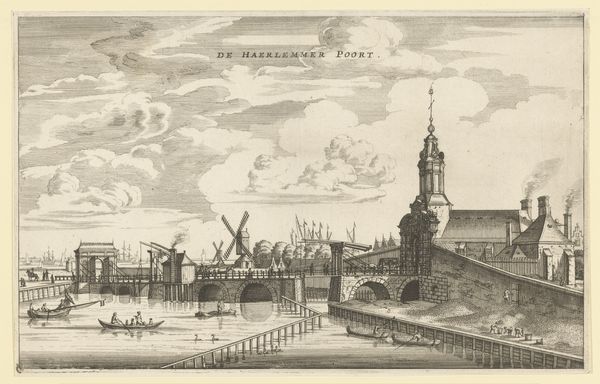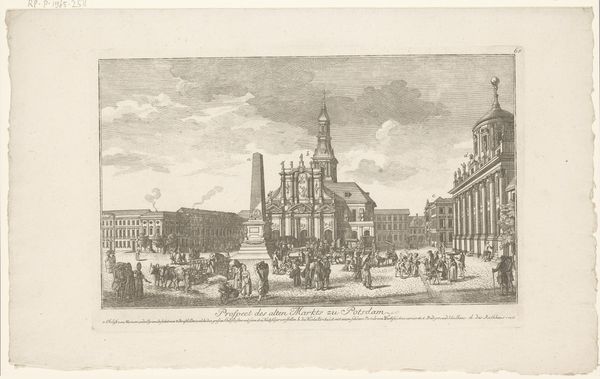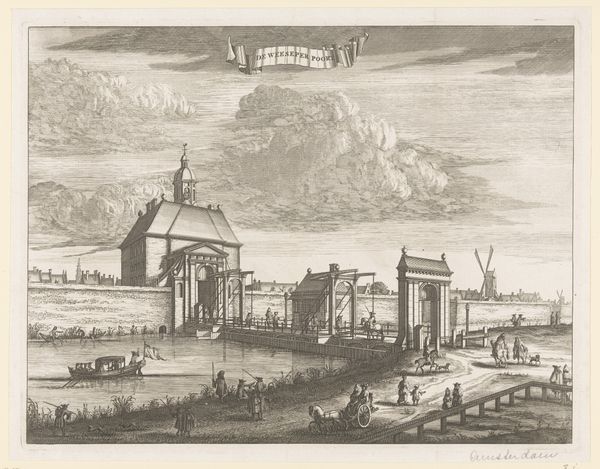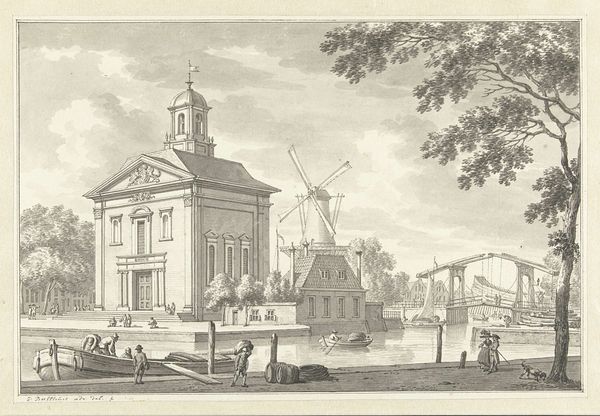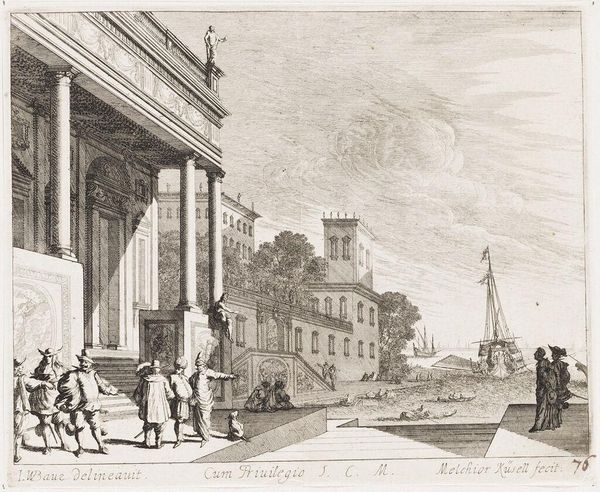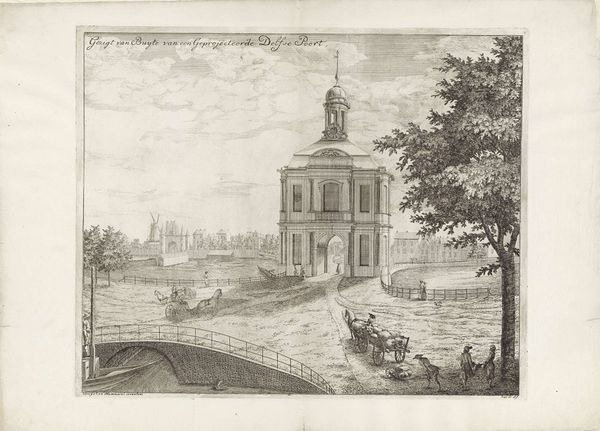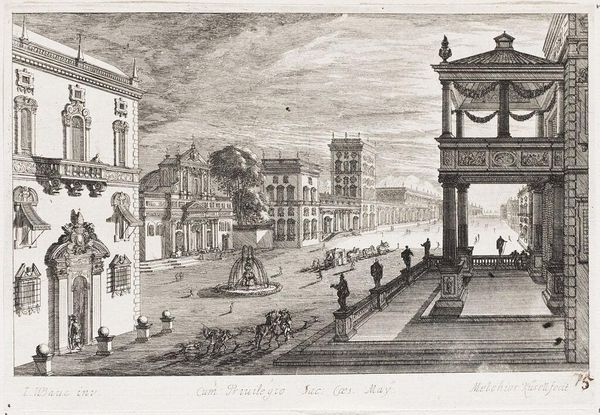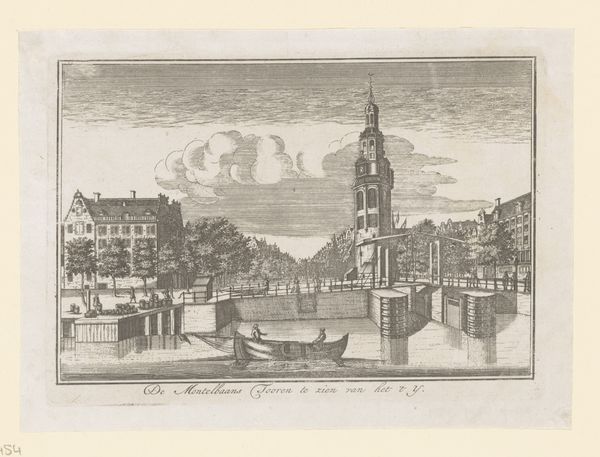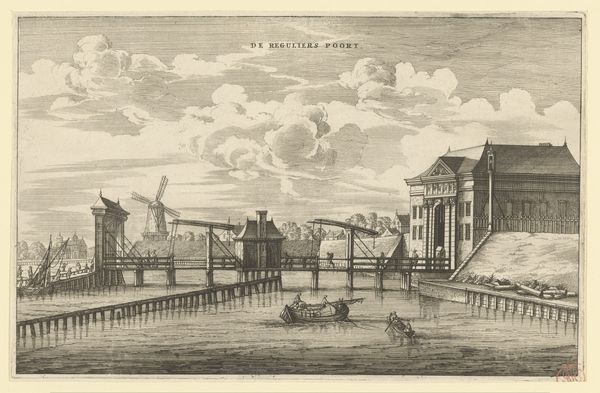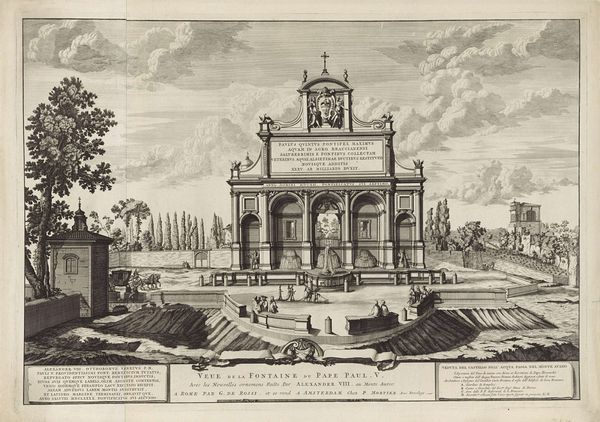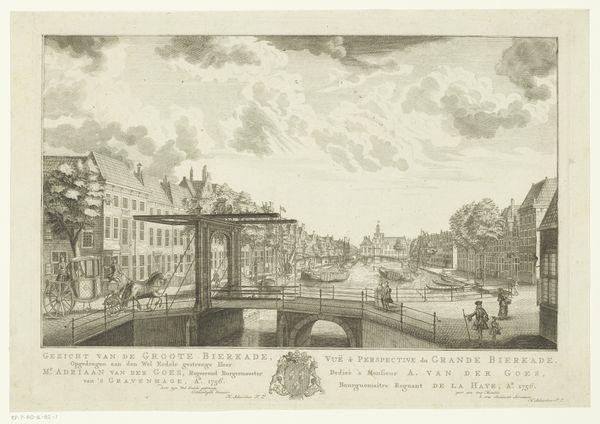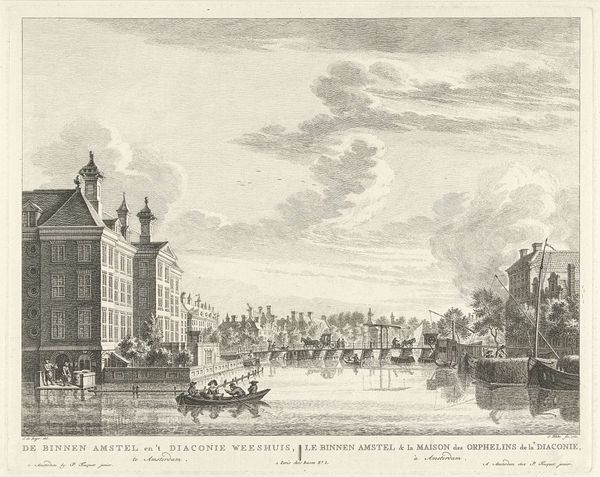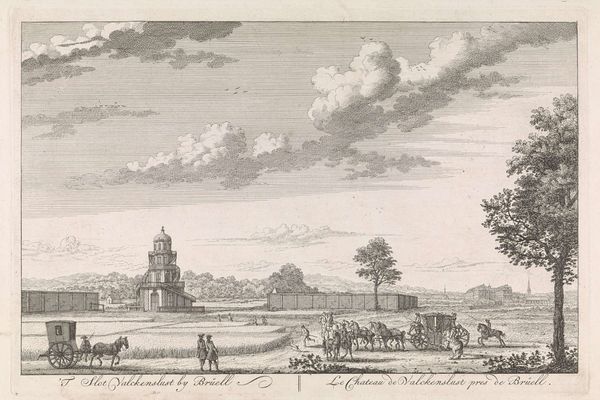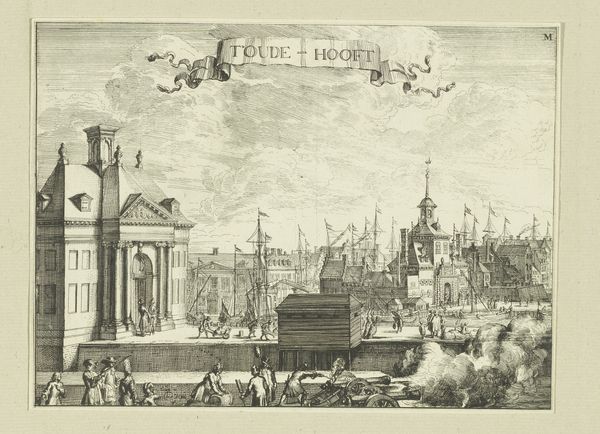
Podium voor het vuurwerk bij de viering van het Tweede Eeuwfeest van de Leidse Hogeschool, 1775 1775
0:00
0:00
cornelisbogerts
Rijksmuseum
Dimensions: height 281 mm, width 360 mm
Copyright: Rijks Museum: Open Domain
Editor: This is "Podium voor het vuurwerk bij de viering van het Tweede Eeuwfeest van de Leidse Hogeschool, 1775" by Cornelis Bogerts. It’s an etching and engraving. I’m struck by the contrast between the intricate detail of the temporary structure in the water and the working windmill in the background. How do you interpret this piece, thinking about materials and creation? Curator: What intrigues me is the depiction of ephemeral spectacle using very durable means. Printmaking allowed for the mass production and dissemination of this celebratory event. Consider the labor involved: the physical construction of the fireworks platform juxtaposed with the skilled hand required to etch and engrave the image. Where does the "art" reside? In the temporary architecture of the display, or in the permanent impression rendered in ink and paper? Editor: That’s interesting, because it feels like the print almost gives more permanence to the fireworks platform than the actual event. It also democratizes access - more people would have seen the print than the fireworks themselves. Curator: Precisely. The very act of creating this print – the materials, the labor, the intention to distribute – turns our attention to questions about who got to experience the spectacle. Who was producing the artwork and for whom? Editor: So it’s not just about the image, but also about the act of creating and distributing it. I hadn't considered the social impact of the print medium itself in relationship to a single event. Curator: The materiality informs its purpose and meaning. Consider how the means of production impacts our understanding of both the event and the art. Editor: I see. It makes me think about how images circulate and the hands involved in that process. Thanks for helping me see this beyond just the celebratory scene! Curator: My pleasure! The materiality is key, remember to ask yourself what things are made of, how, and for whom.
Comments
No comments
Be the first to comment and join the conversation on the ultimate creative platform.
